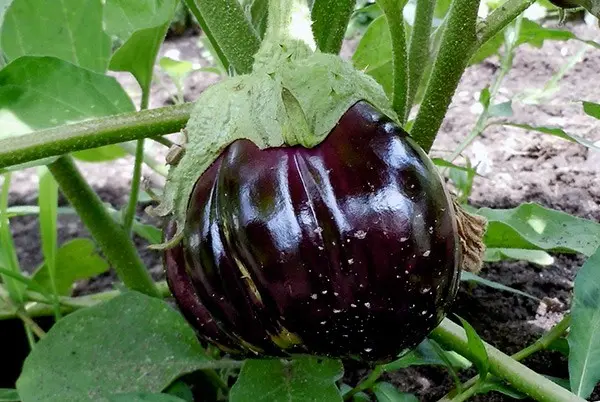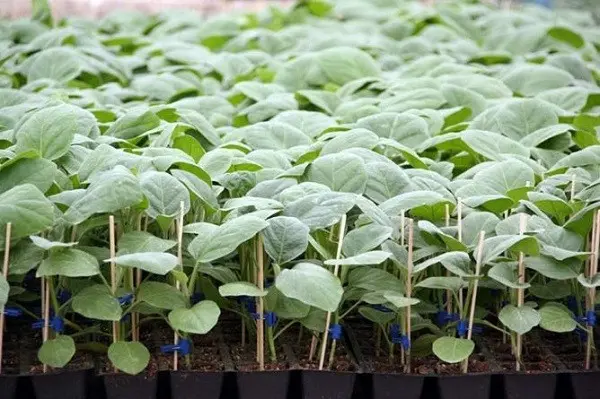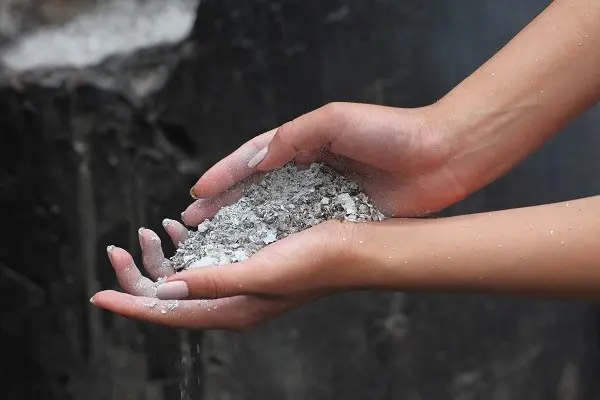Contents


Among the insects that can ruin the life of eggplants and the person who grows them, the voracious aphid occupies a leading position. The danger of this insect in a greenhouse can be compared to an invasion of locusts. With inaction, not one plant dies, but sometimes all living things planted indoors. Aphids belong to the order Hemiptera, semi-bugs. More than 4000 species of this insect are known to science, more than 1500 of which live on the Eurasian continent. Aphid colonies feed on plant juices, devastating the plant, and immediately switching to a new one. They are also dangerous because they carry various plant viruses, infecting the earth and fruit and vegetable crops.
What aphid attacks eggplant
As with any pest, it is important to determine what kind of aphid has settled in your greenhouse in order to choose the right means for control and tactics for special procedures. Of course, any species can settle on eggplants, but melon (cotton) aphids and green peach aphids often stay in greenhouses.

Invasion of green peach aphids usually occurs at the very beginning of the season. Insects are light green in color, with a pair of wings, as well as processes on the back of the abdomen. Depending on the nutrition of aphids, the pigmentation of their body changes, acquiring pink, dark green, yellow shades.
The gourd aphid prefers high air temperatures and actively manifests its presence towards the middle of summer. The color of this species of aphids ranges from light yellow to black-green. The darker the color of the aphid, the larger the individual. The color also indicates the type of activity of the insect: so light (yellow-green) individuals are small, develop very slowly, do not produce offspring, are practically not dangerous for eggplant; dark green and black individuals develop in the shortest possible time, actively breed and destroy all plants (and not just one bush) in just a couple of days.
Aphid harm
The invasion of aphids in the greenhouse causes significant harm to all plants, since they parasitize not only eggplants. Do not underestimate the danger of these insects only because of the small size of their body, the main strength of aphids in the number of individuals in the colony.

Aphids attach and nest on all parts of the plant. Nutrition occurs by piercing the upper layers of the skin of the leaves and then sucking out the juices. This leads to an acute shortage of eggplant nutritional resources, as well as to the rapid necrosis of leaf or stem tissues. In the process of life, the aphid covers the eggplant with crystalline secretions similar to sugar syrup – honeydew. This leads to the development of soot fungus. In addition, aphids release many toxins that adversely affect the life of the plant.
The fruits that form on eggplant affected by aphids are small, deformed, bitter and practically unsuitable for human consumption.
Video “How to deal with aphids?”
Experienced gardeners tell about proven methods of getting rid of aphids on plants.
Methods of struggle
It is imperative to fight aphids, because, having destroyed the plants of this season, they will hide until the next and repeat the destructive raid. There are several ways to get rid of aphids, but one by one their effectiveness is extremely low. The fight should be approached comprehensively.
Chemicals
The use of pesticides for insect control must be done with a full understanding of when they can be used and when not. Even if you know that the drug will definitely work, it cannot be applied to a plant that blooms or (even more so!) Fruits.
If you noticed hordes of aphids in time, then feel free to start fighting it with the help of drugs such as Aktara, Karbofos, Decis Profi, Aktellik. Choose fast-degrading insecticides that do not linger or build up in the plant. Each drug has its own mixing scheme, so carefully read the instructions before use. Also make sure that your skin and respiratory tract are protected – pesticides are dangerous for human skin and mucous tissues. Spraying eggplant should be carried out in a well-ventilated area, early in the morning in dry weather.
Folk remedies
You can get rid of aphids with folk remedies when the eggplant has already begun to bloom or bear fruit. All improvised materials will be used – from tops and mowed grass to tobacco ash.
Recipe 1: in a large bucket with a volume of at least 10 liters, mix the tops of potatoes, tomatoes, zucchini, garlic, celandine (in a 1: 1 ratio), add 400 g of wood ash and 1 glass of liquid soap (or grated laundry soap). Mix the resulting mixture well, set aside in a dark, warm place for 3 days. Stir the mixture from time to time. Before spraying, you need to strain the mixture, you can apply it once a week.

Recipe 2: in a ten-liter bucket, mix 50 g of tobacco ash, 50 g of chopped chili pepper, pour the ingredients with warm water. Such a solution should be infused for 24-30 hours. After that, add 150-200 g of wood ash, 3 tbsp. spoons of soap, mix well and strain. You can spray eggplants with this solution every 10 days.
Recipe 3: chop the stems and leaves of bitter wormwood and tansy, you will need 1 kg of raw materials from each plant. Mix them, pour 1-2 liters of water and boil for 10-15 minutes. The resulting broth, after it has cooled, must be filtered and diluted to 10 liters. Before use, add 5-6 tbsp. spoons of liquid soap.
Recipe 4: dried yarrow (800-900 g) is crushed and then soaked in boiling water (1-2 l) for 2 days. Before spraying, the infusion is diluted to 10 liters, liquid soap is added.

Other insects and plants
Plants and insects can help get rid of aphids, even in greenhouse conditions. When planting eggplants, make sure that marigolds, coriander, onions, garlic, mint, fennel, basil or lavender grow next to them. The volatile aromatic substances of these plants repel insects, preventing them from taking root. You can plant them in small islands between eggplants or surround them with a kind of living fence. This method is suitable for both prevention and control.
Another way is to lure insects that hunt and feed on aphids: hoverflies, ladybugs, lacewings, earwigs, ground beetles, predatory bugs and mites. Of course, this method carries certain risks, since saving eggplants you can destroy other plants. But with full control, everything will go smoothly. To lure most of the listed insects, plant lavender, dill, garlic, and carrots on the beds adjacent to the eggplants. For example, hoverflies really like daisies, the pollen of which they feed on. The favorite delicacy of ground beetles is potatoes, tomatoes, peppers. Lacewings prefer shady fern thickets. Earwigs will flock to sawdust from all over the area if you put them in the garden. Remember that the same ladybugs (their larvae) can be purchased at garden stores.

Do not despair when this insect invades, confident actions and following the simplest instructions will definitely save your eggplants.
Video “Means from aphids”
Ways to solve problems with aphids on eggplant are described in this video.









